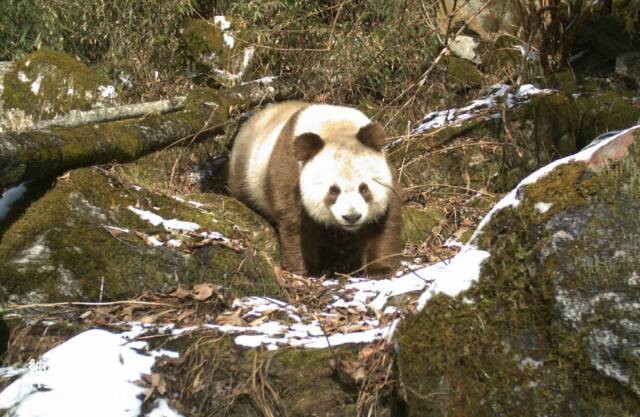The history of human beings traveling with pandas can be traced back to the Lufeng hominid of Yunnan. There are also records of people walking with pandas at dozens of sites such as Lantian Homo, Peking Man, Hexian Homo, Maba Homo, Liujiang Homo, Heliang Homo, Guandu Homo and so on.
The so-called walking together means that prehistoric humans once lived with pandas in the same natural environment, and they have walked together for 8 million years until now.
During the years when humans and pandas walked together, things were not always smooth sailing for each other. According to the development of human thinking, they have generally gone through several stages of harmonious coexistence - "table delicacies" - pet treatment.

Early Years: Living in Harmony
Living in harmony shows that there are fewer conflicts and that humans and animals are not subordinate. Such a harmonious environment can only be seen back in the days of Lufeng Hominus and Eo-Panda.
The era when Lufeng Hominin lived was 8-7 million years ago. Although the physical shape of Lufengpithecus has the potential function of upright walking, its overall structure has not completely broken away from the category of apes. Under normal circumstances, they will not take the initiative to attack other animals. Judging from the members of the Lufeng fauna, the greatest threat to the panda is not the Lufeng hominin, but the saber-toothed tiger.
In the early days, there was also a small panda and a Wulingshan panda, who lived day and night with the "Wushan ape-man", "Jianshi ape-man" and a large primate species, Gigantopithecus. In such an ecological environment, will the small species of panda be the prey of the "Wushan ape-man", "Jianshi ape-man" or even giant apes? The answer is yes. However, burial information from the "Wushan ape-man" and "Jianshi ape-man" sites show that the fossils of small species of pandas are well preserved, and there are no hacking marks on the surface of the bones. In comparison, the bones of large herbivores such as Elephants-Are-Endangered.html">elephants, rhinos, oxen, and deer often have numerous hacking marks. These properties show that the small species of pandas and Wulingshan pandas are not yet hunted in the eyes of the "Wushan ape man" and the "Jianshi ape man". However, no matter what kind of panda, once it encounters these "ancient people", it is probably a disaster.
Judging from the general trend, the days when Eo pandas, small species pandas, Wulingshan pandas and Lufeng hominids, "Wushan ape man" and "Jianshi ape man" get along are more harmonious than fearful.
Medium term: “Table food”
The period between 100 and 20,000 years ago was the heyday of Panda panda reproduction, and it was also a period of high development of human wisdom. Preliminary statistics include "Lantian ape man", "Yunxi ape man", "Beijing ape man", "Hexian ape man" and Changyang man, Maba man, Liujiang man, Xichou man, Xinglongdong man and Heliang man in the Homo sapiens period. Pasteurian panda fossils or subfossils have been found in the sites of Guandu and Guandu people. Moreover, the unearthed panda fossils are relatively abundant, and the number of intact materials such as skulls and mandibles has also increased accordingly. Complete Panda skeletons have also been found in Yanjinggou, Chongqing and Qujiang, Guangdong.
The author examined the Panda fossils unearthed from many human sites and found that many specimens had slash marks. For example, the broken panda humerus at the Peking Man Site does not look like it was caused by natural factors. Another example is the Bashi panda from the "Hexian Ape Man" site. The material is broken and the cross section has pit scars. This information shows that the "harmonious" relationship between the pandas and the apes and homo sapiens with whom they lived in their heyday evolved from a "harmonious" relationship in their early years to a subordinate relationship. To put it bluntly, pandas at this time have become "dinner delicacies" for prehistoric humans.
Late stage: Pet treatment
From the Neolithic Age to the present, human beings who have traveled with them have stepped from primitive society to civilized society, from destroying the ecological environment to protecting nature and caring for the global village. It goes without saying that the pandas hidden in the deep mountains and forests have also changed their destiny, attracting much attention from the world, and becoming pets of men, women, old and young.
animal tags:
We created this article in conjunction with AI technology, then made sure it was fact-checked and edited by a Animals Top editor.